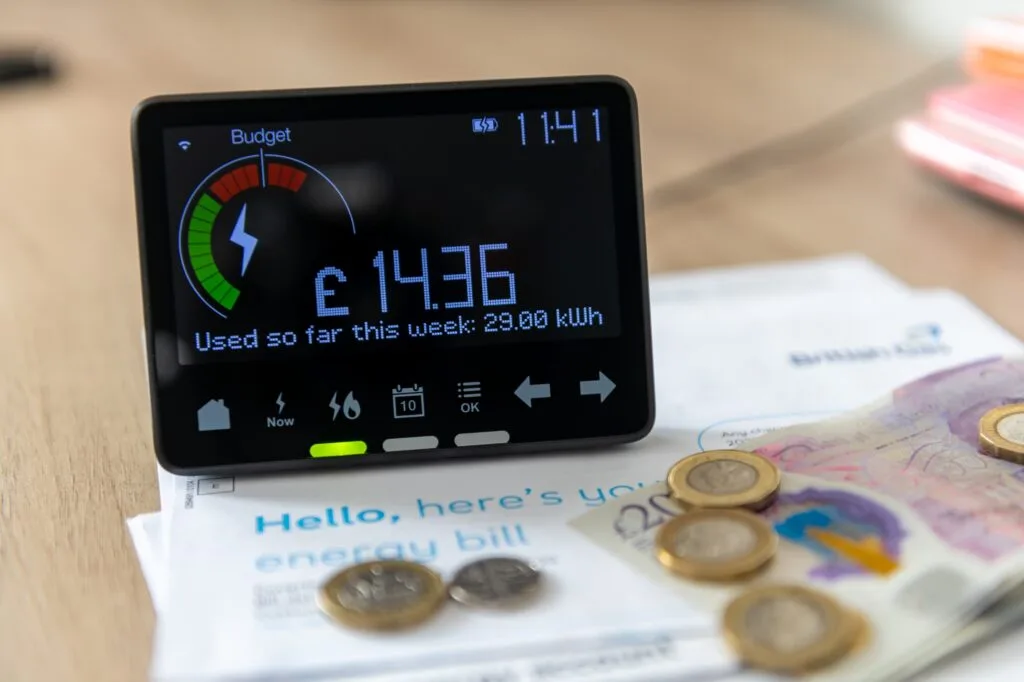UK Energy Cap Rises: Why Home Insulation Is the Smart Investment
Rising UK Energy Cap and Its Impact on Households
The UK energy price cap for a typical dual-fuel household increased 2% on October 1, 2025, raising the annual cost to £1,755 — an extra £35 per year (£2.93 per month). The cap, valid until December 31, 2025, sets the maximum rates for electricity and gas per unit, as well as standing charges, but not the total bill.
Rising global wholesale energy prices are driving the increase. Coupled with the colder months, household energy use naturally rises, putting extra strain on budgets.
The good news is insulation can help you combat this increase, as we detail below specific examples. For £1 spent on insulation can yield savings of around £1.20, making it one of the most cost-effective home improvements you can make.
Current Energy Prices in the UK and Their Household Impact
Energy prices in the UK remain at historically high levels, significantly affecting household budgets. Beyond the rising cap, standing charges have also gone up — now 53.68p per day for electricity and 34.03p per day for gas. That’s roughly £196 per year for electricity and £124 per year for gas, even before you turn on a single light or radiator.
While energy price cap predictions suggest a potential dip to around £1,740 by January 2026, experts warn that energy costs are likely to stay volatile for the foreseeable future. Homeowners need long-term, energy-efficient solutions that keep their bills low regardless of market changes, and insulation remains one of the most reliable ways to achieve that.
Why Home Insulation Is Critical Under the UK Energy Cap
Under the UK Energy Price Cap, households pay per unit of energy consumed — meaning the only real way to reduce costs is by using less energy. That’s where effective home insulation comes in.
According to the Energy Saving Trust, a typical uninsulated UK home loses:
-
33% of heat through its walls
-
25% through the roof
-
20% through the floors
Without proper insulation, you’re effectively heating the outdoors. By adding or upgrading insulation, you slow heat loss, keep warmth inside longer, and reduce the need for your boiler or central heating to run constantly. The result? Lower energy use, smaller bills, and a warmer, more comfortable home.
Insulation Investment: A Key to Long-Term Savings
Investing in home insulation kits is one of the most effective ways to reduce energy bills and improve comfort. Well-insulated homes use significantly less energy, cutting heating costs by up to 30% — a major advantage given current UK energy prices.
Key Benefits of Insulation Kits
-
Average 15% reduction in heating and cooling costs
-
Up to 45% total energy savings when combined with draught-proofing
-
Loft insulation kits deliver over 117% ROI and can boost property value by 2–6%
-
Wall, floor, and radiator insulation kits improve heat retention, reduce energy waste, and create a warmer, more efficient home
Insulation Kit Options and Their Impact
-
Loft Insulation Kits – Stop up to 25% of heat loss through your roof and start saving within a day of installation.
-
Wall Insulation Kits – Reduce wall heat loss by up to 40%, cutting bills by £600–£1,200 annually while improving your EPC rating.
-
Floor Insulation Kits – Eliminate cold draughts from below and save around £80 per year in heating costs.
-
Radiator Kits – Reflect heat back into rooms, saving around £25 per year and improving overall efficiency.
Best Areas to Install Home Insulation Kits in the UK
Insulation is most effective when targeted at areas where your home loses the most heat. Here’s where to start for the best return on your insulation investment:
1. Loft Insulation Kits – The Fast, High-Impact Upgrade
Because heat rises, an uninsulated loft is one of the biggest sources of heat loss in UK homes. Installing loft insulation to the recommended 270mm depth can reduce roof heat loss by up to 90%. Most DIY loft insulation projects take just a single day and start delivering energy savings immediately.
2. Wall Insulation Kits – The Cost-Effective Essential
Older properties without cavity walls lose heat far more quickly. Adding internal or external wall insulation kits can transform your home’s thermal performance, cut heating costs, and improve property value. For many homes, wall insulation offers the best long-term return on investment.
3. Floor Insulation Kits – The Finishing Touch
Cold floors often force you to turn up the thermostat unnecessarily. Insulating suspended timber floors can save around £80 per year, keeping your rooms warmer while preventing heat loss through the ground. Floor insulation adds comfort and efficiency to any energy-saving plan.
4. Radiator Kits – Maximise Your Heating Efficiency
Radiator reflector kits are an easy, low-cost upgrade that helps your heating system perform better. By fitting reflective panels behind radiators on external walls, you can reduce heat loss and direct more warmth back into your living space.
This simple DIY improvement can save around £25 annually on energy bills and enhance the effectiveness of your existing insulation.
Your Ready Checklist to Get Started Today
- Assess your home – Check loft, wall, and floor insulation levels.
- Combine insulation types – Layer loft, wall, and floor insulation for maximum efficiency.
- Order Ecohome Insulation Kits – DIY-friendly kits with guides and materials included.
- Schedule installation – Most upgrades can be completed over a weekend.
Why Act Now
The UK Energy Cap increase underlines the critical need for energy efficiency in homes. Start saving on energy bills now with Ecohome DIY insulation kits — easy to install, cost-effective, and designed to improve home comfort this winter.

